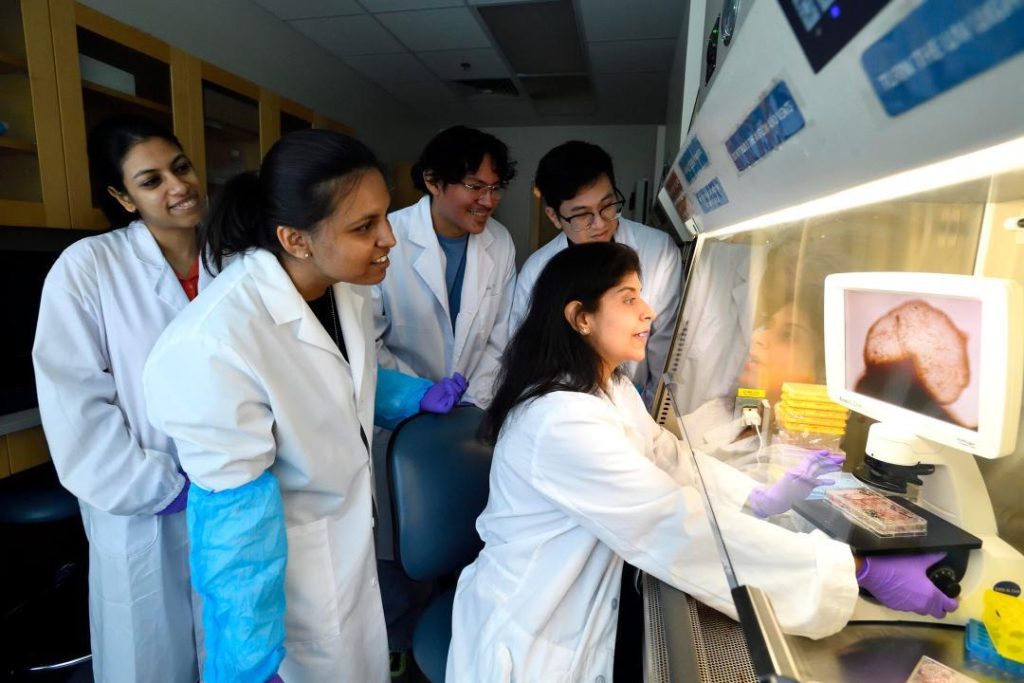
Mini Brain’ Grown by Indian-Origin Scientist
In a groundbreaking achievement, a team of researchers at Johns Hopkins University, led by Indian-origin professor Annie Kathuria, has successfully grown a novel whole-brain organoid containing neural tissues and rudimentary blood vessels. This human cell-based model has the potential to revolutionize the study of neurological disorders and could lead to more effective treatments for conditions such as schizophrenia and autism.
The development of this mini brain, also known as an organoid, is a significant milestone in the field of neuroscience and regenerative medicine. Organoids are three-dimensional structures that mimic the structure and function of organs in the human body. They are created by growing cells in a specific pattern to form a specific tissue or organ.
Kathuria and her team used stem cells to grow the organoid, which measures about 1 millimeter in diameter. The organoid contains neural tissues, including neurons and glial cells, as well as rudimentary blood vessels. The researchers were able to observe the organoid’s development in real-time, which has allowed them to study the underlying biology of neurological disorders.
“This mini brain lets us watch disorders develop in real time, test treatments, and tailor therapies for individual patients,” said Kathuria, an associate professor of biomedical engineering at Johns Hopkins University. “It’s a game-changer in the field of neuroscience.”
The potential applications of this technology are vast. By studying the development of neurological disorders in a controlled environment, researchers can gain a better understanding of the underlying causes of these conditions. This could lead to the development of more effective treatments and potentially even cures.
Organoids have already been used to study a range of diseases, including cancer, diabetes, and Parkinson’s disease. However, the development of a whole-brain organoid is a significant achievement, as it allows researchers to study the complex interactions between different brain regions and cells.
In addition to its potential therapeutic applications, the mini brain could also be used to study the effects of environmental toxins and other external factors on brain development and function. This could help researchers to better understand the causes of neurological disorders and develop strategies to prevent them.
The development of the mini brain is also a testament to the power of collaboration and interdisciplinary research. Kathuria’s team included researchers from a range of disciplines, including neuroscience, biomedical engineering, and stem cell biology.
“The ability to grow a whole-brain organoid is a testament to the power of interdisciplinary collaboration,” said Kathuria. “It’s an incredible achievement that wouldn’t have been possible without the expertise and contributions of our entire team.”
The mini brain was grown using a combination of stem cells and biomaterials. The researchers began by growing stem cells in a specific pattern to form a sphere. They then added biomaterials, such as a gel-like substance, to support the growth of the organoid.
Once the organoid had developed, the researchers were able to observe its structure and function using a range of imaging techniques, including microscopy and magnetic resonance imaging (MRI). They were able to see the development of neural tissues and blood vessels, as well as the formation of synapses, the connections between neurons.
The mini brain is still in its early stages of development, and researchers are already working to improve its structure and function. However, the potential applications of this technology are vast, and it could lead to significant advances in our understanding and treatment of neurological disorders.
As Kathuria and her team continue to develop and refine the mini brain, they are excited to see the potential impact it could have on the field of neuroscience.
“This mini brain has the potential to revolutionize the way we study and treat neurological disorders,” said Kathuria. “It’s an incredible achievement, and we’re excited to see where it takes us.”
Source: https://hub.jhu.edu/2025/07/25/hopkins-researchers-develop-whole-brain-organoid/






